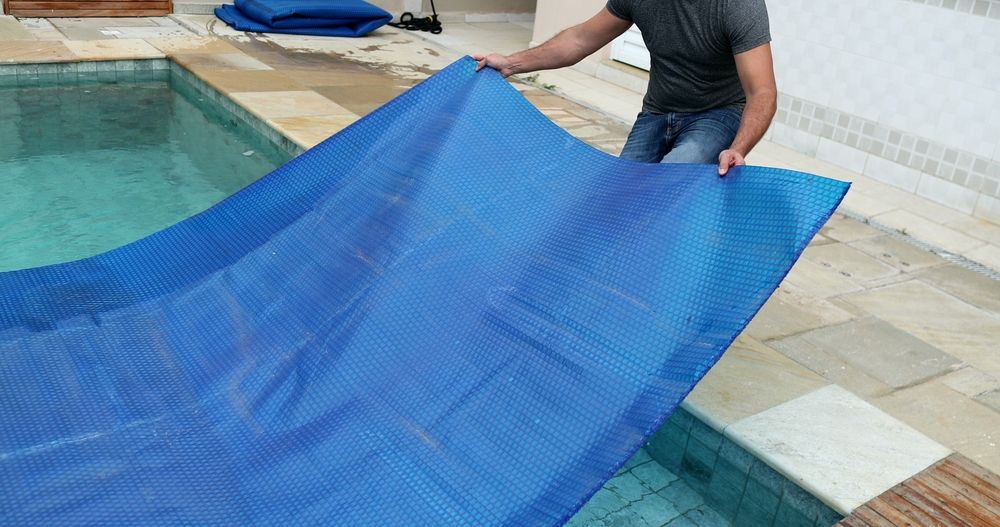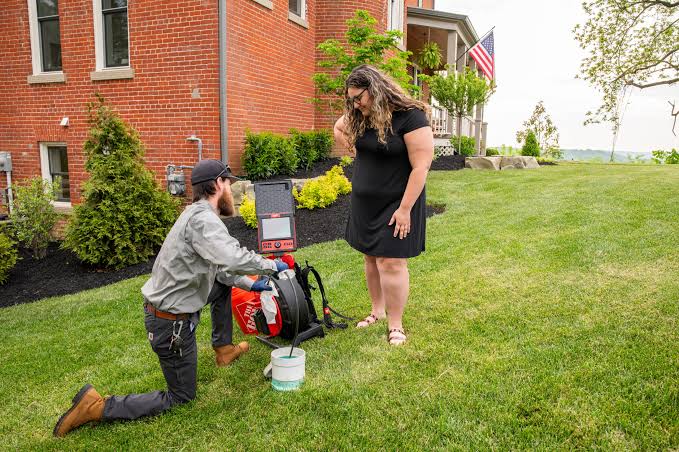Keeping a swimming pool clean and well-maintained can be a challenge, especially when dealing with problems like algae growth and stubborn stains. Without proper care, pools can quickly become dirty, leading to increased maintenance costs and time-consuming cleanups. Algae can turn the water green and slimy, while stains can make the pool floor and walls look unattractive. These issues often arise due to exposure to sunlight, debris, and chemical imbalances, making pool maintenance an ongoing battle for owners.
One of the best ways to prevent these common pool problems is by using a pool cover. A high-quality cover acts as a protective shield, reducing algae growth, preventing stains, and keeping the water balanced. By limiting the exposure to outside elements, a cover makes it easier to maintain clean, clear water with less effort. This article explores how pool covers help prevent algae, staining, and other pool-related issues, ensuring a safe and enjoyable swimming experience.
How Pool Covers Reduce Algae Growth
Algae are microscopic plants that thrive in water, especially when exposed to sunlight and unbalanced chemical levels. When a pool is left uncovered, sunlight penetrates the water, allowing algae to photosynthesize and multiply rapidly. Warm temperatures and poor circulation can also contribute to algae growth, making the water cloudy and unsafe for swimming. Additionally, debris such as leaves, dirt, and insects can introduce organic material into the water, further encouraging algae development.
Using a pool cover helps reduce algae growth by limiting the amount of sunlight that reaches the water’s surface. Without sunlight, algae struggle to grow, making it easier to maintain clear and healthy water. Additionally, a cover prevents organic debris from entering the pool, reducing the risk of contamination. Swimming pool safety covers provide an extra layer of protection by keeping out unwanted materials and maintaining a controlled environment. With fewer algae outbreaks, pool owners can spend less time scrubbing and treating the water with chemicals, leading to a more enjoyable swimming experience.
Preventing Stains and Discoloration with a Pool Cover
Stains can be a frustrating problem for pool owners, as they often develop due to the accumulation of debris, metals, and chemical imbalances. When leaves, twigs, and dirt sit in the water for too long, they can release tannins and other substances that cause unsightly stains on the pool’s surface. Additionally, high levels of iron, copper, and other metals in the water can react with chlorine, leading to discoloration. Over time, these stains can become difficult to remove, requiring expensive treatments and deep cleaning.
A pool cover helps prevent stains by acting as a barrier between the water and external contaminants. By keeping leaves and debris out, the cover reduces the chances of staining and keeps the water looking fresh. Pool safety covers are especially effective in protecting the pool’s surface, as they securely seal off the water and prevent dirt from accumulating. With a well-maintained cover in place, pool owners can enjoy a cleaner, more visually appealing swimming area without the hassle of frequent stain removal.
Maintaining Balanced Water Chemistry
Keeping pool water balanced is crucial for preventing algae growth and stains. When chemical levels fluctuate too much, it can lead to problems like murky water, metal staining, and increased bacteria buildup. Chlorine, which helps sanitize the water, can break down quickly when exposed to sunlight for extended periods. If chlorine levels drop too low, algae can grow more easily, while high levels of metals in the water can cause unwanted stains. pH imbalances can also make the water too acidic or too alkaline, leading to damage on pool surfaces and equipment.
Using a pool cover plays an important role in maintaining balanced water chemistry by preventing evaporation and reducing direct sunlight exposure. When water evaporates, it takes chemicals with it, causing levels to change more quickly. A cover helps keep these essential chemicals in the pool, reducing the need for frequent adjustments. Additionally, by preventing dirt and debris from entering the water, a cover helps limit the number of contaminants that could react with chlorine or other chemicals. This creates a more stable and consistent swimming environment, making maintenance easier and reducing costs on pool treatments.
Protecting the Pool’s Surface from Damage
Aside from keeping the water clean, a pool cover also helps protect the physical structure of the pool itself. Pool surfaces, whether they are made of vinyl, plaster, or concrete, can become stained or discolored when exposed to organic material, minerals, and fluctuating chemical levels. Leaves, branches, and dirt that sit in the water for too long can cause permanent marks, while excessive UV exposure can cause the pool lining to fade over time. If left unchecked, these issues can lead to expensive repairs and resurfacing work.
By covering the pool when it’s not in use, owners can minimize these risks and extend the life of their pool’s surface. Inground pool covers are particularly effective in providing complete coverage, sealing off the water from harmful external elements. This protection helps keep the pool looking newer for longer, reducing the need for costly restorations. Additionally, a cover helps prevent damage caused by harsh weather conditions, such as heavy rains or strong winds, which can introduce contaminants and cause unexpected water level fluctuations.
Saving Time and Money on Pool Maintenance
Owning a pool is a rewarding experience, but maintenance can be time-consuming and expensive. Without proper protection, pool owners may find themselves constantly cleaning, adjusting chemical levels, and treating water issues like algae and stains. Frequent chemical treatments, vacuuming, and brushing can add up in both effort and cost, making pool care a demanding task.
A pool cover simplifies maintenance by reducing the factors that contribute to water imbalances and surface damage. By preventing algae growth, staining, and evaporation, a cover reduces the need for excessive cleaning and chemical use. Over time, this results in significant cost savings on pool supplies and reduces the amount of time spent on upkeep. Additionally, because covers help extend the lifespan of pool equipment by preventing buildup and corrosion, owners can avoid costly repairs and replacements. Investing in a high-quality cover is a smart decision for anyone looking to keep their pool in top condition with minimal effort.
Ensuring a Cleaner and Safer Swimming Environment
A well-maintained pool is not just about appearance—it’s also about safety. Pools that are left uncovered can accumulate bacteria, algae, and other harmful contaminants that pose health risks to swimmers. Algae, in particular, can make pool surfaces slippery, increasing the chances of accidents and falls. Additionally, when chemical levels become unbalanced, swimmers may experience skin irritation, red eyes, or respiratory issues due to high chloramine levels.
Using pool covers helps prevent these issues by keeping unwanted pollutants out and preserving the chemical balance of the water. A clean pool with stable chlorine levels is much safer to swim in, reducing the risk of infections and other health concerns. Moreover, covers add an extra layer of safety by preventing accidental falls into the water, especially for children and pets. By incorporating a cover into regular pool maintenance, owners can enjoy a safer, more hygienic swimming environment for everyone.
Final Thoughts
Keeping a pool in top condition requires regular maintenance, but a simple step like using a pool cover can make a significant difference. Without proper protection, pools are vulnerable to common problems such as algae growth, staining, and chemical imbalances. These issues not only make the pool look uninviting but also increase maintenance time and costs. However, by using pool covers, owners can effectively prevent these problems and maintain cleaner, healthier water with less effort. A well-maintained pool enhances the overall swimming experience, making it more enjoyable for family and friends. Instead of spending hours on cleaning and chemical adjustments, pool owners can focus on relaxation and fun.
Investing in a high-quality pool cover helps reduce evaporation, block debris, and minimize chemical fluctuations. This leads to long-term savings, a safer swimming environment, and a pool that stays in great condition for years. Additionally, a cover extends the life of pool surfaces and equipment, preventing premature wear and costly repairs. By incorporating a pool cover into their maintenance routine, pool owners can enjoy clearer water, fewer stains, and a more enjoyable swimming experience without the hassle of constant upkeep. Whether for residential or commercial use, a reliable pool cover is an essential tool for preserving both the beauty and functionality of any swimming pool.





